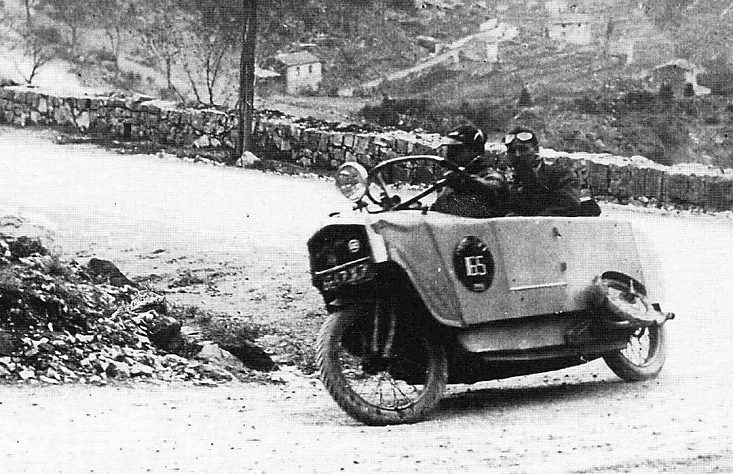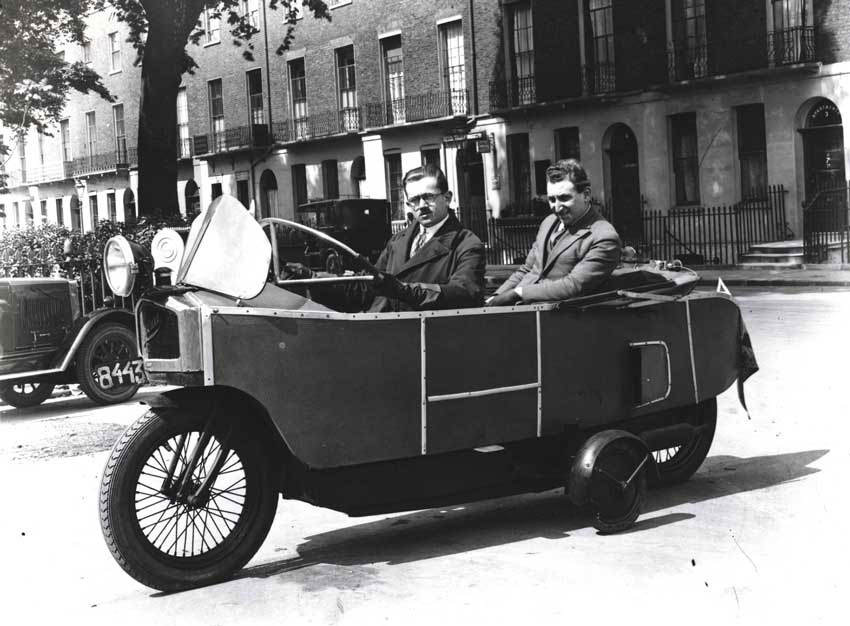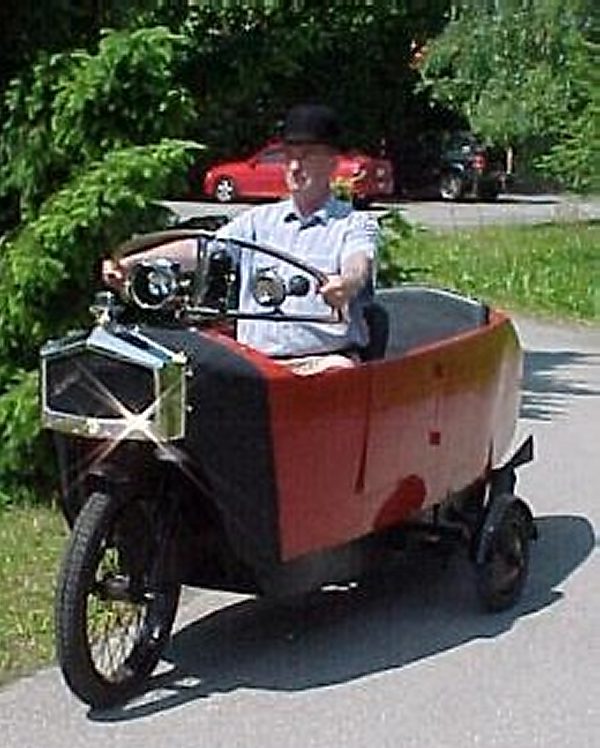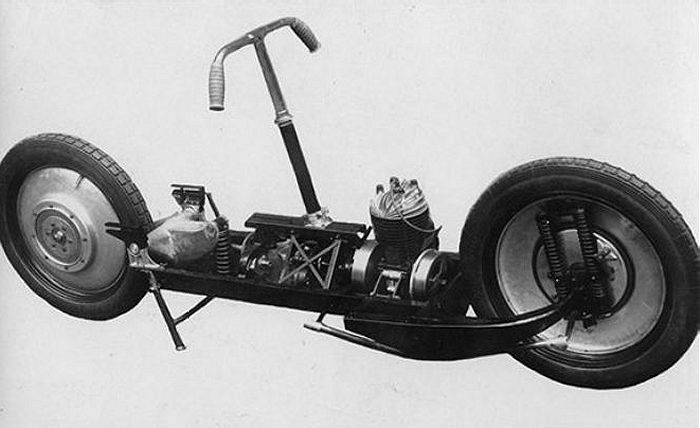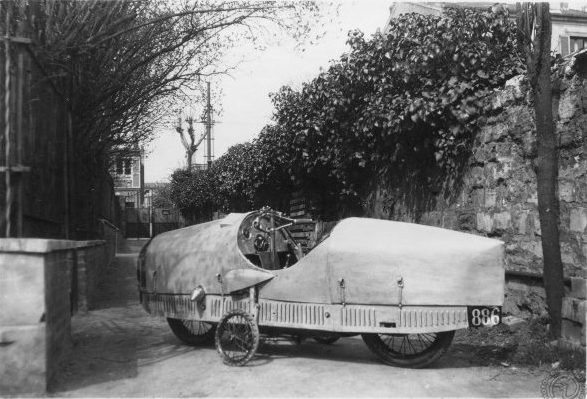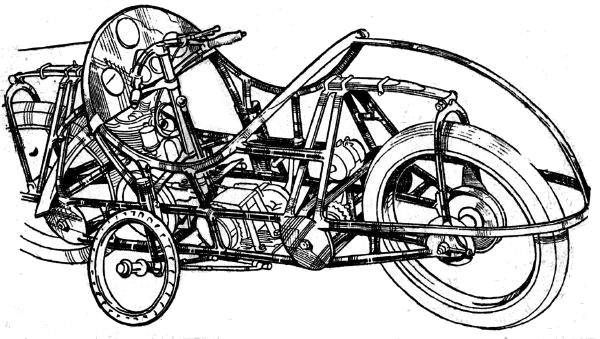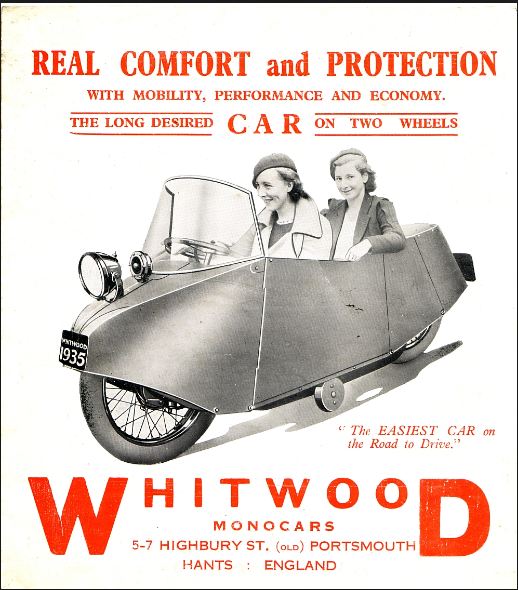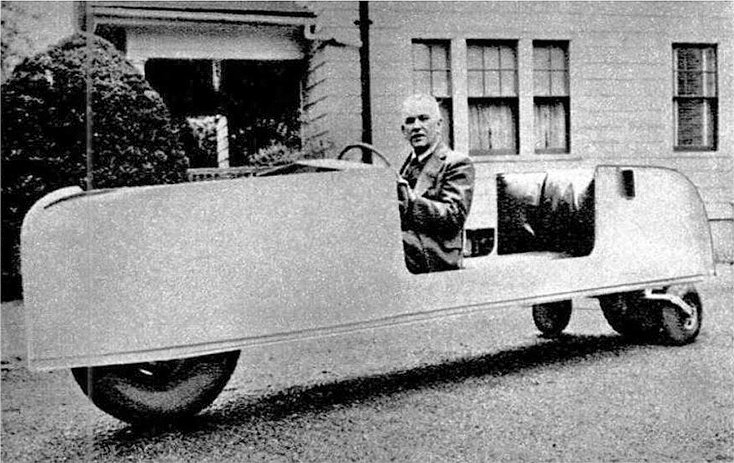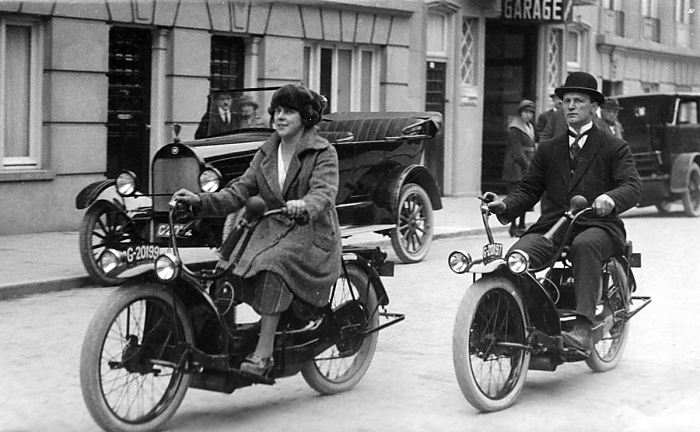No passenger accomodated.
For a long time this machine was described here as a Verdon Roe car. This is now known not to be the case as the Vernon Roe car (note corrected spelling) or Avro car was a quite different machine.
The caption reads: "Mr E A Lawson in his NeraCar based FF machine in 19?8." The date has now been deciphered by Chuck Bencik, to whom many thanks, and it is definitely 1948. As Chuck pointed out, the style of the shirt-collar confirms this.
This car was built in 1948 by Alec Lawson, a supplier of accessories to the aircraft trade, of the Sackville company in Sparkhill, Birmingham.
It was a one-off special based on the Ner-A-Car, but with the frames extended by about 5 inches. The body was aluminium, with two out-rigger wheels. There were twin headlamps, a windscreen, a dashboard for instruments and 'an intricate exhaust system', though what was intricate about it and whether it was a good idea is currently unknown. The engine, designed and built by a Mr Haythorn, was a 288cc air-cooled in-line over-head camshaft four with a three-speed gearbox bolted directly to it, with a bevel-gear drive for the rear chain. There was never any plan to market the design.
FF means Foot-Forward, and refers to a kind of motorcycle where the rider sits with feet ahead in a car-type sitting position, rather than with feet below and astride, as on normal motorcycles. The NeraCar (no, not my pun) was an FF motorcycle made in the USA from 1921 - 1926. Mr Lawson had therefore converted a machine that was already more than 20 years old.














